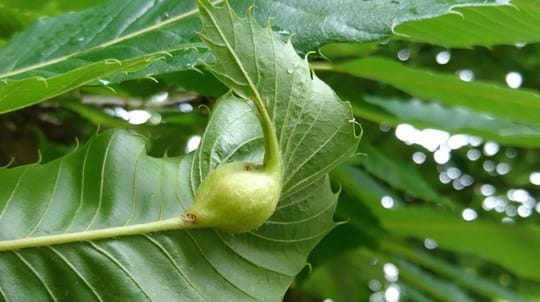
Tree health

Oxford University
It’s one of the most common pathogens on oaks in Europe and, in late summer (July-August), it’s hard to miss oak powdery mildew on the leaves of oak trees throughout the UK. You’ll notice a whitish “powder” coating the leaves, in some cases causing them to become highly distorted. This is the fungal mycelium, the asexual part of the fungus, which grows on living leaf tissue and hungrily taps into the sugars that the plant has busily captured during photosynthesis.
There is no cure for oak powdery mildew, but nurseries routinely have to spray fungicides to prevent the pathogen from stunting the growth of young trees. This tree disease is a biotrophic pathogen meaning it can only grow on living tissue so doesn’t kill the host directly. However, it will reduce its growth by coating a large proportion of the tree’s powerhouses – its leaves – with mycelia, thus preventing them from photosynthesising. Evidence from Europe suggests that, in combination with other stressors including insect pests, oak powdery mildew can have a significant impact on tree growth. In some cases, leading to the death of the tree.
Oak powdery mildews have been observed in the UK since at least the 19th century and it’s plausible that at least one species of the pathogen is native to these shores. However, scientists recently revealed an unlikely origin for the most common species of oak powdery mildew, Erysiphe alphitoides – found to be exactly genetically identical to Oidium mangiferae, a powdery mildew on mango. This suggests an origin for the species in tropical Asia and that somewhere along the line the species “jumped” to grow on oak, as well as mango! Oak powdery mildew may therefore be an early example of a plant disease brought in by international trade. Something which is unfortunately, increasingly common.